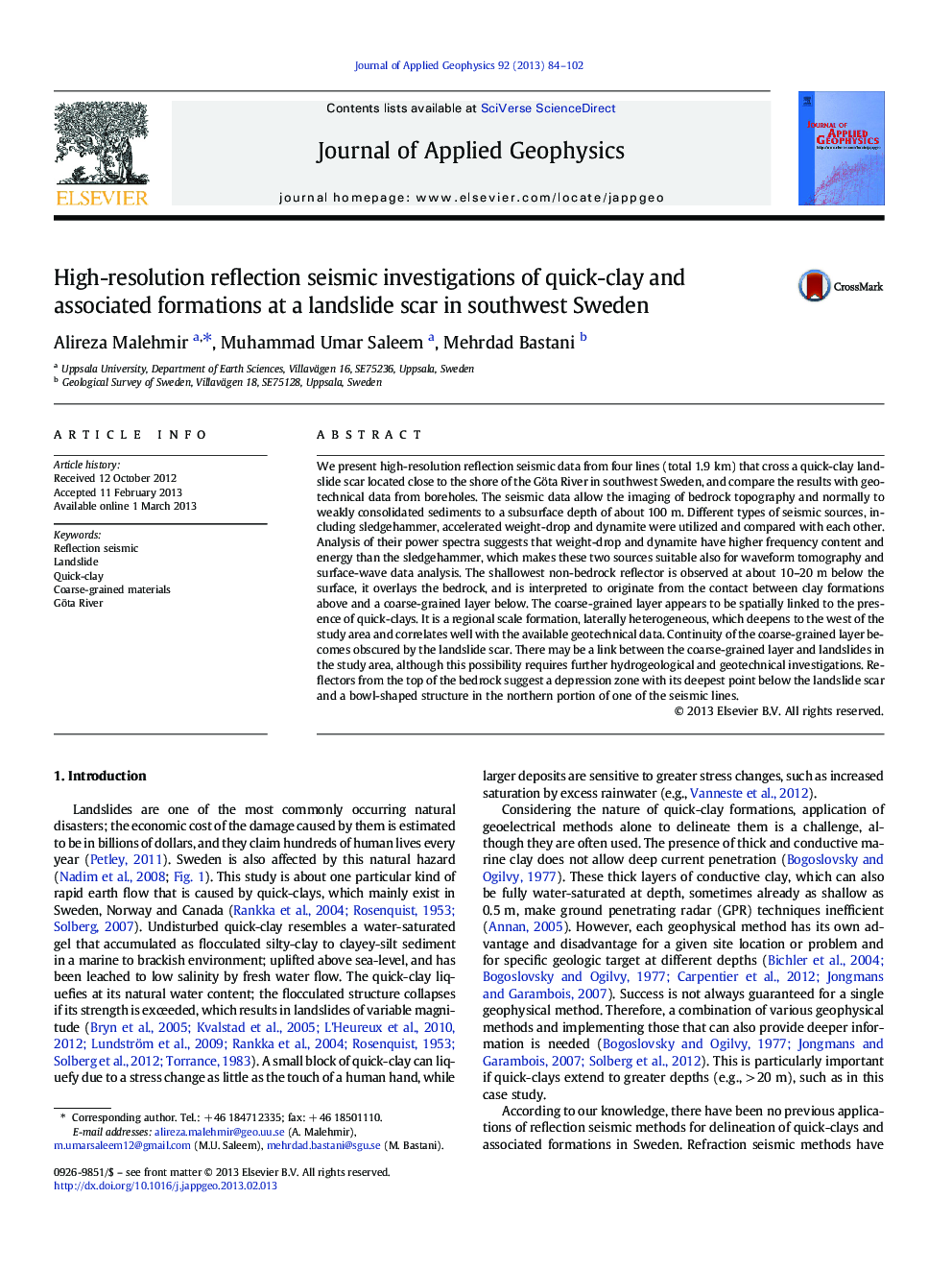| کد مقاله | کد نشریه | سال انتشار | مقاله انگلیسی | نسخه تمام متن |
|---|---|---|---|---|
| 4740399 | 1641159 | 2013 | 19 صفحه PDF | دانلود رایگان |
• High-resolution reflection data were acquired over a quick-clay landslide scar.
• Shallow bedrock (< 5 m) and over-consolidated sediments are imaged.
• Over-consolidated coarse-grained layers and quick-clays are spatially linked.
We present high-resolution reflection seismic data from four lines (total 1.9 km) that cross a quick-clay landslide scar located close to the shore of the Göta River in southwest Sweden, and compare the results with geotechnical data from boreholes. The seismic data allow the imaging of bedrock topography and normally to weakly consolidated sediments to a subsurface depth of about 100 m. Different types of seismic sources, including sledgehammer, accelerated weight-drop and dynamite were utilized and compared with each other. Analysis of their power spectra suggests that weight-drop and dynamite have higher frequency content and energy than the sledgehammer, which makes these two sources suitable also for waveform tomography and surface-wave data analysis. The shallowest non-bedrock reflector is observed at about 10–20 m below the surface, it overlays the bedrock, and is interpreted to originate from the contact between clay formations above and a coarse-grained layer below. The coarse-grained layer appears to be spatially linked to the presence of quick-clays. It is a regional scale formation, laterally heterogeneous, which deepens to the west of the study area and correlates well with the available geotechnical data. Continuity of the coarse-grained layer becomes obscured by the landslide scar. There may be a link between the coarse-grained layer and landslides in the study area, although this possibility requires further hydrogeological and geotechnical investigations. Reflectors from the top of the bedrock suggest a depression zone with its deepest point below the landslide scar and a bowl-shaped structure in the northern portion of one of the seismic lines.
Journal: Journal of Applied Geophysics - Volume 92, May 2013, Pages 84–102
